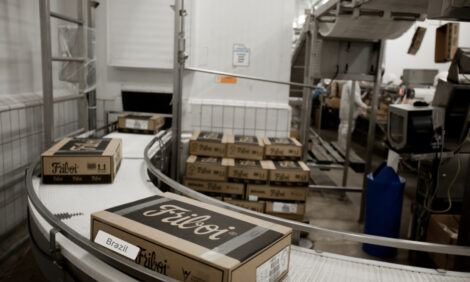



Novel Strain of FMD in Gaza Strip
GAZA STRIP - The detection in the Gaza Strip of a new case of a novel strain of foot-and-mouth disease (FMD) underscores the importance of maintaining - and intensifying -- international efforts to stop the virus from spreading further in the Middle East and North Africa, FAO said today.Following outbreaks of the SAT2 strain of the virus in Egypt and Libya in February, fears that it might jump to neighboring areas were confirmed on 19 April when sick animals were detected in Rafah, a town in the Gaza Strip bordering Egypt.
The SAT2 variant is new to the region, meaning that animals do not have any acquired resistance to it.
"Diseases simply do not respect international boundaries, and if FMD SAT2 reaches deeper into the Middle East it could spread throughout vast areas, threatening the Gulf countries - even southern and eastern Europe, and perhaps beyond" said Juan Lubroth, FAO's Chief Veterinary Officer and head of the organization's Animal Health Service.
With vaccines against the SAT2 virus still in short supply, the priority at the moment is to limit animal movements to prevent its further spread, he said. Heightened surveillance of animal populations to quickly detect and respond to new outbreaks is also critical.
Movements of animals from the Nile Delta eastward through the Sinai Peninsula and north into the Gaza Strip have been deemed the highest risk for the spread of the SAT2 FMD virus strain into the wider Middle East region, where livestock are a major component of household food security.
Transmitted via the saliva of sick animals, the FMD virus can live outside a host for a long while and spreads easily via contaminated hay, stalls, trucks, shoes and clothing - even the hands of traders inspecting animals at market.
Another SAT2 virus strain was recently reported in cattle in Bahrain, but only at a quarantine centre. This emphasises the importance of thorough inspection and prevention systems when dealing with imported plants, animals or other biological material.
Mobilising vaccines
Following official reports of the FMD SAT2 outbreaks in Egypt, Israel quickly implemented targeted vaccination along its southern borders to create a buffer zone of protection for animal herds most at risk.
Gaza Strip will be receiving an initial lot of 20,000 vaccine doses to protect its valuable cattle. An additional 40,000 doses will be made available as soon as possible for sheep and goats.
Meanwhile, FAO and the FAO-based European Commission for the Control of Foot-and-Mouth Disease (EuFMD) are negotiating with producers and vaccine banks to find sources for vaccines in the event of further spread of foot-and-mouth disease and a worsening of the current situation.
Today, a FAO/OIE Crisis Management Centre for Animal Health (CMC-AH) team arrived in Libya to take additional samples from affected animals so that the virus can be better characterised and the most suitable vaccine found or produced, thereby ensuring the maximum efficacy of eventual vaccination campaigns. The team will also lend Libyan veterinary services support in strengthening their efforts to control FMD outbreaks.
TheCattleSite News Desk


